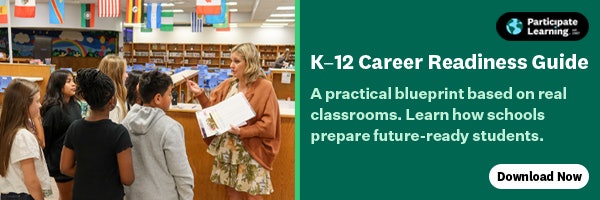
This week, I had the privilege of participating in the AI in Education Fair at the University of Florida, joining educators and researchers to explore the intersection of artificial intelligence and education. This experience, coupled with insights from Dr. David Touretzky's keynote at our recent VEX Robotics Educator Conference, has once again brought to the forefront a question that continues to divide educational leaders: In an era where AI can generate code with a simple prompt, should we still be teaching computer science to our students?
The Push to Deprioritize CS Education
The question isn't purely theoretical. In discussions with district leaders and curriculum directors at both events, I encountered a growing sentiment that perhaps traditional computer science education is becoming less relevant. Their reasoning often follows this logic: if AI tools can now write code more efficiently than humans, shouldn't we focus our limited instructional time on other priorities?
This perspective has gained momentum as AI coding tools become increasingly sophisticated. One district administrator candidly shared, "We're considering scaling back our coding curriculum to make room for AI literacy instead. After all, these students will likely be prompting AI to write code rather than writing it themselves."
The concern is understandable. Schools face considerable pressure to prepare students for a rapidly changing future with limited instructional time. If AI can handle the heavy lifting of writing code, perhaps teaching the intricate syntax of programming languages seems less pressing than teaching students how to effectively prompt and direct AI tools.
Looking Beyond Job Training
This view, while pragmatic in some respects, fundamentally misunderstands what computer science education offers our students. It treats coding as merely a vocational skill—a means to an employment end—rather than recognizing it as an intellectual discipline that shapes how students think and approach problems.
At both the AI in Education Fair and the VEX Robotics conference, I was reminded of Seymour Papert's revolutionary concept that we don't just teach coding so students can become programmers; we teach it as a powerful medium through which students learn to think. Papert, a pioneer in education technology, viewed programming as a form of expression—a way to articulate and explore complex ideas, much like writing or mathematics.
During the AI in Education Fair at the University of Florida, discussions highlighted the work of Dr. Maya Israel, whose research was recently featured in the New York Times. Her work underscores the importance of computational thinking as a cross-disciplinary cognitive framework that extends far beyond vocational training in programming.
The Cognitive Benefits of Coding
Computer science education offers unique cognitive benefits that remain valuable regardless of how much code is eventually written by AI systems:
- Algorithmic Thinking: Learning to break down complex problems into solvable components is a foundational skill that transcends coding itself.
- Systematic Reasoning: Programming requires students to think logically and sequentially, organizing their thoughts in structured ways.
- Debugging Mindset: The process of identifying and fixing errors in code cultivates persistence and analytical problem-solving that applies to all domains.
- Pattern Recognition: Coding helps students recognize patterns and build generalizable solutions—a skill critical for making sense of complex systems.
These cognitive skills don't become less relevant in an AI-powered world—they become more essential. As AI handles more routine coding tasks, human contributions will increasingly center on framing problems clearly, recognizing patterns in complex systems, and having the persistence to iteratively refine solutions.
AI as Collaborator, Not Replacement
At the VEX Robotics conference, Dr. Touretzky, representing the AI4K12 initiative that develops guidelines for AI education in K-12, presented a compelling perspective on the relationship between AI and computer science education. His presentation suggested we should view AI as a collaborator in computer science rather than a replacement. The relationship parallels that between calculators and mathematics education – calculators didn't eliminate the need to understand mathematical concepts; they elevated the level at which students could explore those concepts. Similarly, AI doesn't eliminate the need for computational thinking; it elevates what we can accomplish with it.
This perspective shifts the conversation away from the false dichotomy of "teach coding or teach AI" toward recognizing that effective AI use is grounded in computational thinking. Students who understand the concepts underpinning coding are better equipped to use AI coding tools effectively, recognize their limitations, and verify their outputs.
The Role of Coding in Learning Transfer
In discussions with teachers at the VEX Educators Conference, another crucial benefit of coding education emerged: its role in transferring computational thinking to other domains.
Teachers shared observations about how students who learned basic programming concepts demonstrated improved problem-solving in mathematics and science. Several noted that students approached word problems differently after coding experience – breaking down complex problems into steps and testing solutions systematically. These are skills developed through coding that now apply across subjects.
This transfer effect is supported by research showing that coding education enhances spatial reasoning, executive function, and problem-solving abilities. Research demonstrates that spatial reasoning skills—which coding helps develop—are crucial for success across STEM fields and beyond.
From Job Skills to Medium of Expression
Perhaps most importantly, framing computer science solely as a job skill misses its deeper value as a medium of expression and exploration. When we teach writing, we don't simply focus on the practical skill of composing emails or reports—we recognize writing as a powerful way to express and develop ideas. Similarly, coding offers students a unique medium to explore concepts across disciplines.
In my travels all over the world, I witness this firsthand as students use coding not merely to complete assignments but to express creative solutions to robotics challenges.
The discussions at the University of Florida further reinforced this concept. The discussions shared emphasized that while AI might generate basic code, it cannot replicate the creative problem-solving and design thinking that emerges when students express their ideas through the medium of code.
Moving Forward: CS Education in an AI World
Rather than retreating from computer science education, the rise of AI calls for its evolution. Based on insights from both events, here are the directions educators should consider:
- Emphasize conceptual understanding over syntax memorization: With AI handling more syntax-level code generation, our focus should shift more toward the underlying concepts of computational thinking.
- Integrate AI tools thoughtfully: Introduce AI coding tools as collaborative partners, teaching students to critically evaluate and refine AI-generated code rather than simply accepting it.
- Center authentic problem-solving: Design coding experiences around genuine problems that matter to students, emphasizing the process of framing and approaching these problems.
- Highlight creativity and expression: Encourage students to see coding as a medium for creative expression, not just a technical skill.
- Connect to computational thinking across disciplines: Make explicit connections between the thinking patterns in coding and applications in mathematics, science, and humanities.
The First Coding Lesson
I'm reminded of my first experience teaching coding to students years ago. The assignment was simple: program a robot to move in a square. I watched as students collaborated, strategized, and persisted through multiple failures before achieving success.
What struck me wasn't just that they learned to code—it was how the activity transformed their approach to problem-solving. Students who normally gave up quickly on challenging tasks showed remarkable persistence. Groups that typically struggled to collaborate developed effective teamwork strategies. Students who rarely participated in class discussions became animated leaders.
That experience changed my understanding of what coding education offers. It wasn't primarily about preparing students for programming jobs—it was about providing them with a powerful context to develop thinking skills, collaboration, and persistence.
The discussions at the AI Education Fair reflected a growing consensus among educators: AI can write code, but it can't develop the thinking skills that make humans effective problem solvers. That remains the fundamental value of CS education for our students.
Conclusion
The question shouldn't be whether we need computer science education in an age of AI code generation, but rather how we evolve CS education to prepare students for partnership with AI systems. By viewing coding not merely as a job skill but as a medium for developing and expressing ideas, we provide students with cognitive tools that will serve them regardless of how technology evolves.
Computer science education isn't primarily about training future programmers—it's about developing minds equipped to think systematically and creatively in an increasingly complex world. That mission remains as vital in the age of AI as it has ever been.
Jason McKenna is V.P. of Global Educational Strategy for VEX Robotics and author of “What STEM Can Do for Your Classroom: Improving Student Problem Solving, Collaboration, and Engagement, Grade K-6.” His work specializes in curriculum development, global educational strategy, and engaging with educators and policymakers worldwide. For more of his insights, subscribe to his newsletter.




























